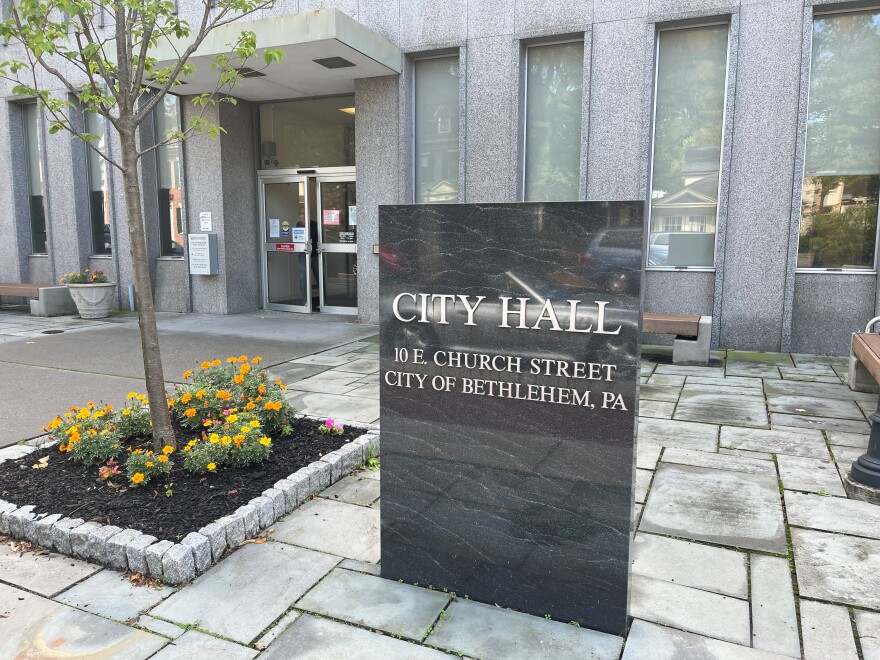BETHLEHEM - Bethlehem officials got a first look at a new strategy to prevent homelessness Tuesday night, which hinges on the construction of the city’s first permanent emergency drop-in shelter along with affordable housing programs.
The plan, which was presented by the Department of Community and Economic Development, lays out a vision for a new shelter with up to 70 individual rooms, each with their own toilet and sink, four family-sized units, and 10 emergency beds in a shared room, along with laundry facilities, a commercial kitchen and space for services.
- Proposed shelter would provide up to 70 beds in individual rooms, along with 10 emergency beds in a shared space and four family-sized units
- New strategy also emphasizes policies that support more affordable housing
- Public hearing on potentially using American Rescue Plan funds for the project comes up Nov. 1
The facility is estimated to cost as much as $7 million to construct, depending on the site selected. Upkeep may run $10,000 per bed, per year.
“The city of Bethlehem is ready to step up and meet the regional need,” Deputy Director of Community Development Sara Satullo said. “It is a major shift from simply meeting the community's fair needs of shelter to a holistic, comprehensive approach.”
“What we’re going to do in the City of Bethlehem absolutely will not solve the problem,” Bethlehem Mayor J. William Reynolds said. “We’re trying to do our part, we’re trying to lead, and we’re trying to work with our community partners."
"It’s our responsibility,” he said.
Right now, the Lehigh Valley has no year-round emergency drop-in shelters, Satullo said. These front-line, low-barrier facilities are meant to provide immediate shelter on demand for anyone who needs it before they are entered into Pennsylvania’s unified system for connecting homeless people with resources and more stable housing.
In theory, Satullo said, residents wouldn’t stay long before moving on to a transitional housing shelter or long-term housing program, and ultimately a permanent place to live.
"It is a major shift from simply meeting the community's fair needs of shelter to a holistic, comprehensive approach.”Bethlehem Deputy Director of Community Development Sara Satullo
Bethlehem and Allentown each open emergency shelters in winter. According to a survey of more than 100 people receiving services conducted for the report, those were the shelters people visited the most.
“These shelters are full almost every night they are open,” Hannah Clark, Bethlehem’s consultant on the project said. “We want to make sure that, through the built solutions process, this is an option that’s on the table.”
Officials said the plan also emphasizes the city’s need to support affordable housing policies and projects, so that once someone leaves the shelter system, they can afford permanent housing.
“Bethlehem did a remarkable thing when it launched this study last March,” Satullo said. “There was no debate about whether the city should help our unsheltered neighbors. We all agreed on the problem, and the city took action to fill this regional void.”
A pandemic crisis
Though Bethlehem City Council first set aside money for a study of building a new shelter earlier this year, homelessness has been increasing in the region since the start of the pandemic.
From Jan. 2020 to Jan. 2022, the report says Eastern Pennsylvania saw a 36% increase in the number of people experiencing homelessness.
Some communities were hit particularly hard. The number of homeless families with children grew by more than 50%. The number of homeless veterans nearly doubled.
Over the past three years, average home prices have risen by more than 50%, according to Satullo. A study the Lehigh Valley Planning Commission released last year estimates a shortfall of 14,480 units of housing for households making less than $25,000 a year.
Of the people surveyed for the report, more than half said they lack housing because they simply cannot find a place they can afford.

Making a plan
To develop its response to increasing homelessness, Bethlehem hired consulting firm Michael Baker, which conducted interviews with stakeholders, service providers and people who have experienced homelessness.
The firm also explored four possible approaches to building a shelter, including constructing a new building from scratch and renovating an existing community building.
According to the consultants, the cheapest option per square foot would be to renovate a hotel or motel where infrastructure is already in place.
The city hopes to use $1.4 million from the Department of Housing and Urban Development’s American Rescue Plan program to help finance construction. A public hearing on the proposed use of these funds is scheduled for Nov. 1.
"There is money for acquisition and rehabilitation and construction, and the city may be uniquely positioned to leverage that."Hannah Clark, Project consultant
“There is money for acquisition and rehabilitation and construction, and the city may be uniquely positioned to leverage that in a way that may not be as viable across the service provider community,” Clark said.
More specific plans, and their costs, are expected with the city’s new budget, which is set to be introduced next month.
Council members and community members alike are looking to expand involvement in the project as much as possible.
Lindsay Clifton, associate pastor of Formation and Justice at First Presbyterian Church of Bethlehem, asked how faith communities with the resources to offer support can get involved. Councilwoman Dr. Paige Van Wirt, a physician, wanted to know more about ways the medical community could get involved.
A full, written report will be published on Bethlehem’s website within the next couple of weeks. In the meantime, work continues on a final comprehensive housing strategy coming next year.


